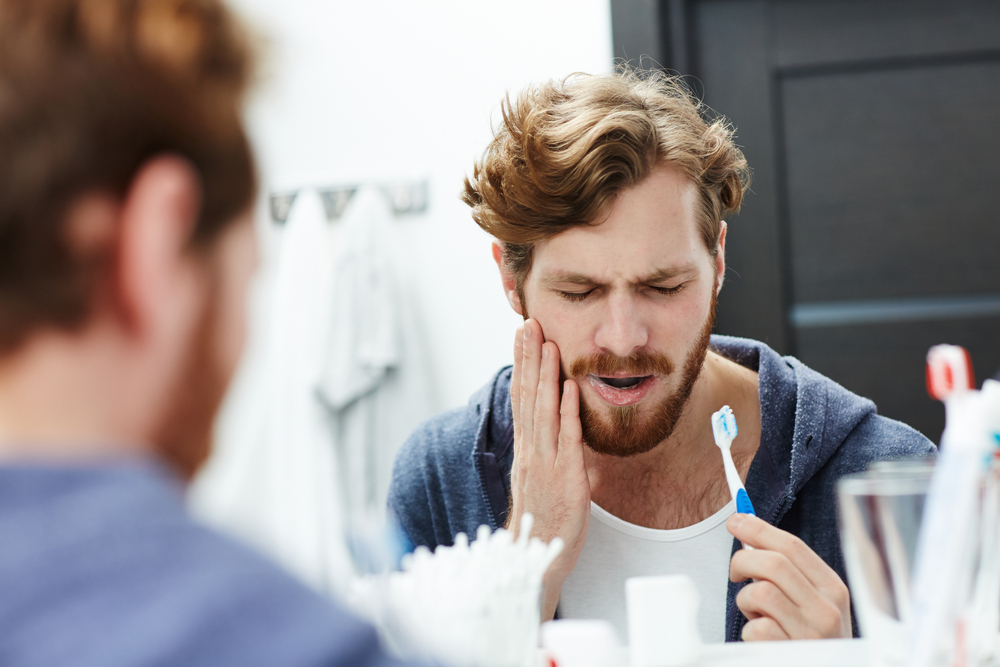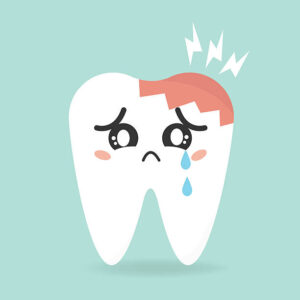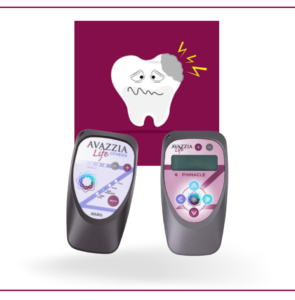
An aching tooth, throbbing gums, and an achy jaw. These are just some reasons our patients come to us for dental pain treatment. And here’s the kicker, did you know that dental issues can contribute to other difficult-to-treat chronic pain conditions like persistent neck and upper back pain, too?
If you’re not getting results from conventional dental pain treatments, this post is for you! We’re sharing an all-natural and drug-free way to reduce inflammation, regenerate tissue, and repair bone so you can enjoy a pain-free smile for years to come.
What Causes Dental Pain?

Dental pain is often the result of tooth decay. When the enamel of a tooth begins to break down, it exposes the sensitive tissue beneath, which can lead to a cavity. Cavities hurt because they are essentially a hole in your tooth that exposes the sensitive nerve endings to hot, cold, or sweet stimuli.
Other common causes of dental pain include:
- Gum disease
- Infection
- Teeth grinding
- Acid reflux
- Post-nasal drip associated with a sinus infection
And in some cases, dental pain can also be caused by an abscessed tooth, which is a pocket of pus that forms around the root of the tooth. If left untreated, an abscess can damage the surrounding teeth and lead to severe infection.
If you’re experiencing dental pain, starting treatment as soon as possible is essential. Remember, pain is a signal that something is off and needs your attention. Dental pain should not be considered “normal.”
The Root Cause of Dental Pain: Inflammation
Dental pain can be caused by various factors, as we previously mentioned. But inflammation is often the root cause. If you’ve been following our blog, you know that inflammation is a BIG problem and is often the root cause of disease. This is where microcurrent shines in treating dental pain – it’s one of the most effective drug-free ways to put out the flames of inflammation.
Learn more about the connection between pain and inflammation here.
Some of Dr. Rob’s favorite anti-inflammatory programs to tackle inflammation (depending on your device) include:
- 121 Hertz
- Blue Stimulation
- SANA Pain
- 350 Hertz Modulate
The bottom line is this: depending on your Avazzia microcurrent device, you have a versatile set of tools at your disposal to tackle the pesky inflammation that’s causing you dental pain. Another way to bring down inflammation body-wide? Vagus nerve stimulation.
Dental Pain and Scar Tissue: How Microcurrent Therapy Can Help
Another important thing to think about when it comes to dental pain is scar tissue. Scar tissue is a common problem that can cause significant pain and discomfort. It is the result of the body’s natural healing process when collagen is produced to repair damaged tissue.
Scar tissue can cause problems by disrupting electrical communication in your body and interfering with the way signals are conducted between nerves. This can lead to dental pain, numbness, and tingling sensations. In addition, scar tissue can put pressure on blood vessels and nerves, leading to pain and degenerative breakdown. So, if you’ve had dental surgery, there’s a good chance you have lingering scar tissue that needs addressing.
- The best way to tackle scarring that could be contributing to your dental pain? According to Dr. Rob, 77 Hertz is THE way to go!
Dr. Rob’s Tip:
“77 Hertz is a fantastic mode to neutralize the electrical buildup of the scar tissue and allow normal body communication, but we want to look at our meridians too! Something as simple as an extraction can affect organ systems in our bodies, so clearing out that old dental scar tissue will go a long way to achieving overall health and vitality.”
– Dr. Robert Vanbergen DNM PhD.
Repairing Soft Tissue to Resolve Dental Pain
Receding gums are a less common cause of dental pain but something we’ve seen our patients successfully treat with microcurrent.
Dr. Rob recommends 90 Hertz as the ideal frequency to regenerate soft tissue. For the best success, run this program daily for 3-5 minutes. If you have the Genesis, you can use 77 Hertz as an alternative.
Learn more about microcurrent wound healing here.

A 2020 study looked at the effects of microcurrent on wound healing after oral surgery. The study found that low-intensity electrotherapy may accelerate wound healing and decrease patient discomfort. The study was conducted on 53 patients, and more research is needed to confirm the findings. However, the results suggest that low-intensity electrotherapy (microcurrent) could be a helpful tool for accelerating oral wound healing and reducing patient discomfort.
Bone & Nerve Repair: How Microcurrent Can Help
Some of the most severe dental pain issues are bone loss and severe nerve damage. It’s important to know that these conditions can take months or years to correct with microcurrent but are an excellent choice for holding off further damage.
- For bone repair, Dr. Rob recommends 7 Hertz or 7-12 Hertz.
- And for severe nerve damage, his top suggestion is 2 Hertz or SANA Bio 2.
The Best Microcurrent Device for Dental Pain
If you are struggling with dental pain, you may wonder what the best microcurrent device is for relief. The good news is that all the Avazzia Life devices we design and promote work well for this purpose. This includes the Avazzia Life Genesis, the Avazzia Life Evolution, and of course, the Avazzia Life Pinnacle.
Each of these devices delivers gentle frequencies that can help to reduce pain and inflammation. In addition, they help to promote healing by stimulating the production of ATP and increasing blood circulation. As a result, if you are looking for an effective way to manage dental pain, a microcurrent device from the Avazzia Life line may be just what you need.
Things to keep in mind when selecting a microcurrent device for oral pain:
If you have extreme nerve dame or need to stimulate soft tissue repair, the Pinnacle will edge out the other two machines. This is because it comes with a more in-depth selection of frequencies and programs to choose from.
Learn more about picking the right microcurrent device for you here.
Microcurrent Accessories for Dental Pain
Now that you understand how to address various issues that cause dental pain, you may be wondering how to get these frequencies into your mouth effectively. In that case, Dr. Rob has some suggestions:
- Direct Treatment
- Tongue Stimulator
- ViaQi
We hope we helped you better understand how microcurrent therapy can help you treat dental pain – whatever the cause. If you are experiencing dental pain affecting your quality of and enjoyment of life, we hope you consider microcurrent therapy as a treatment option. If you have any questions, reach out today or join our Support Group here.
Sources cited:







